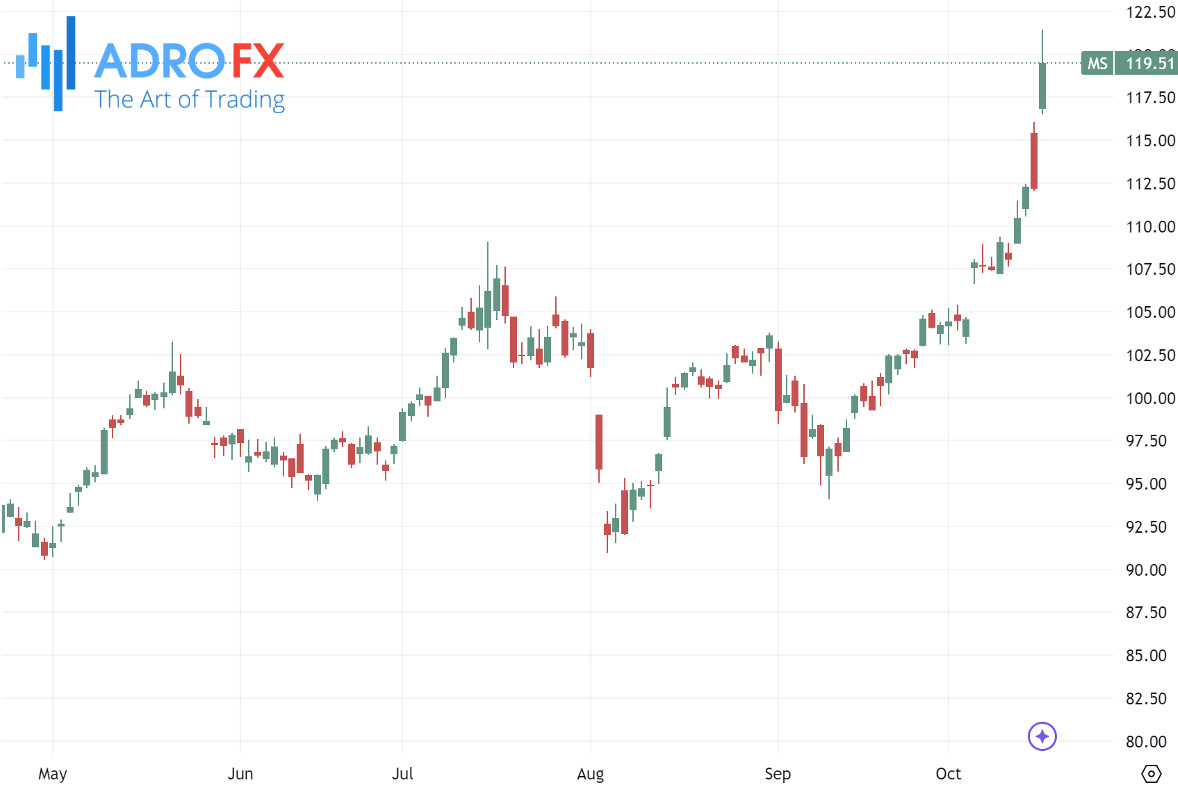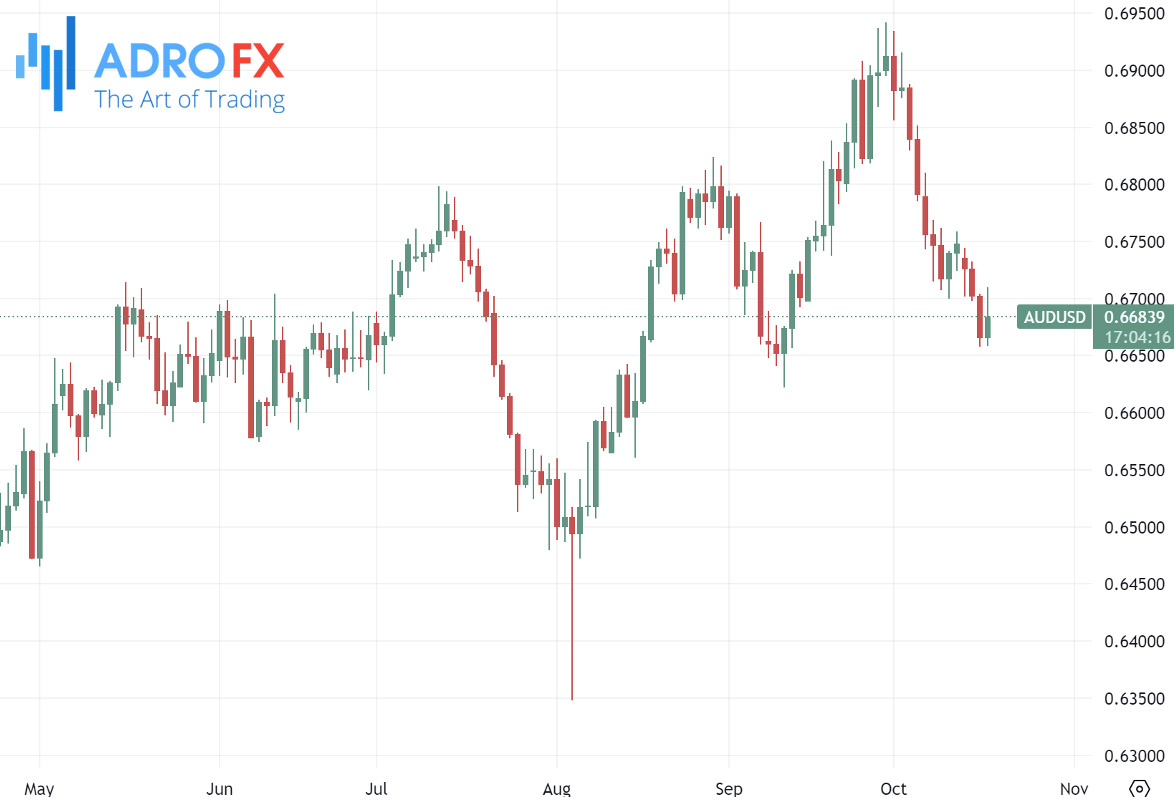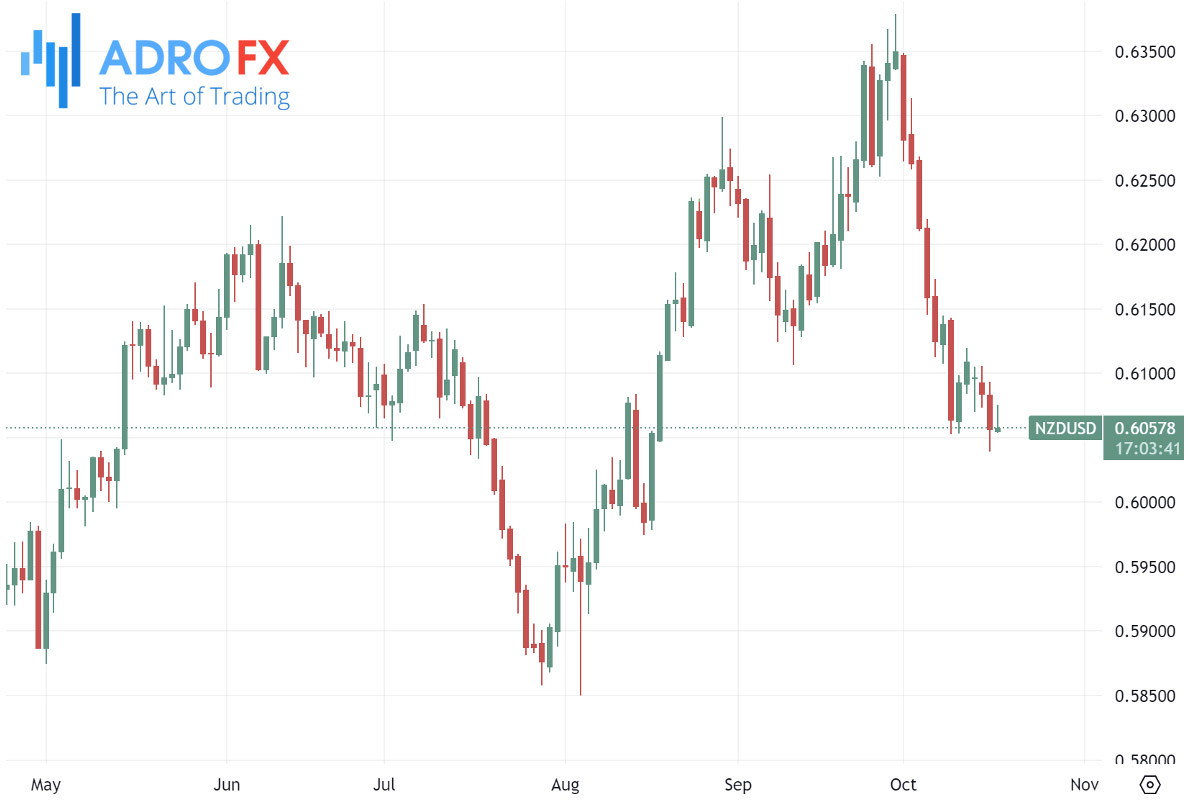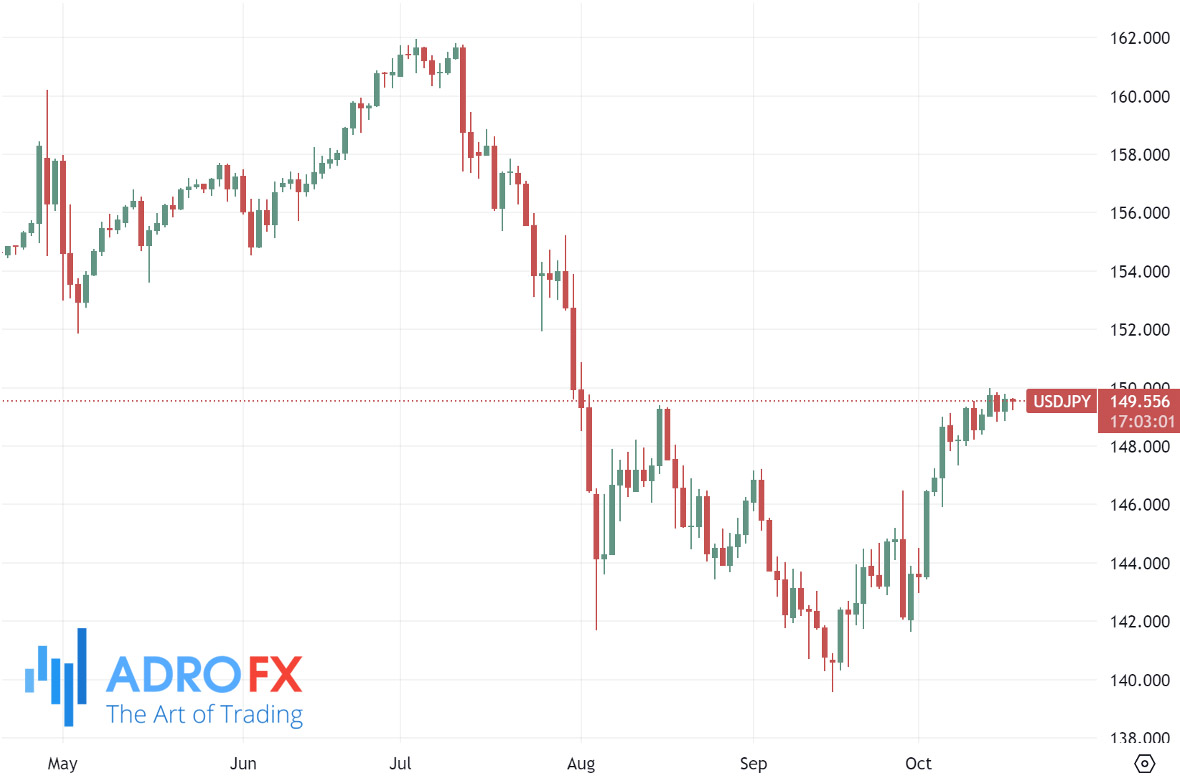Dow Reaches Record High Amid Strong Earnings, AUD and NZD Rebound After Key Economic Reports | Daily Market Analysis

Key events:
- Eurozone - CPI (YoY) (Sep)
- Eurozone - Deposit Facility Rate (Oct)
- Eurozone - ECB Interest Rate Decision (Oct)
- USA - Core Retail Sales (MoM) (Sep)
- USA - Initial Jobless Claims
- USA - Philadelphia Fed Manufacturing Index (Oct)
- USA - Retail Sales (MoM) (Sep)
- Eurozone - ECB Press Conference
- USA - Crude Oil Inventories
The Dow reached new heights on Wednesday, following a slight dip the day before, as chip stocks stabilized and Wall Street continued to release quarterly earnings reports.
The Dow Jones Industrial Average climbed by 337 points, or 0.8%, to a record close of 43,077.70. The S&P 500 rose by 0.5%, while the NASDAQ Composite increased by 0.3%.

Morgan Stanley (NYSE: MS) shares surged over 6% after the bank's third-quarter profits exceeded expectations, boosted by a strong performance in investment banking, which also benefited competitors such as Goldman Sachs (NYSE: GS), Citigroup (NYSE: C), and Bank of America (NYSE: BAC).

In the currency market, the Australian Dollar broke its three-day losing streak against the US Dollar after a positive Australian employment report on Thursday. Employment in Australia increased by 64.1K in September, bringing the total workforce to a record 14.52 million, far exceeding market expectations of a 25.0K rise. The previous month’s figures were revised to a 42.6K increase.

Australia's unemployment rate remained steady at 4.1% in September, matching the revised August rate and beating the forecast of 4.2%. The number of unemployed individuals dropped by 9.2K to 615,700.
Meanwhile, NZD/USD rebounded to around 0.6070 in early Thursday trading. However, the AUD/USD may face resistance due to recent data revealing New Zealand's inflation slowing to its lowest level in over three years, heightening expectations that the Reserve Bank of New Zealand will lower interest rates in November.

New Zealand’s Consumer Price Index (CPI) increased by 2.2% year-over-year in the September quarter, a decrease from the 3.3% rise in the previous quarter. Nicola Growden, consumer prices manager at Stats NZ, noted, "For the first time since March 2021, annual inflation is within the RBNZ’s target range of 1% to 3%. Prices continue to rise, but at a slower pace."
Market participants remain cautious ahead of key economic data from China, New Zealand's largest trading partner, scheduled for Friday, including GDP and Retail Sales data, following disappointing CPI and PPI reports from China.
In Japan, the USD/JPY pair weakened to around 149.40 on Thursday, despite a stronger USD. Traders are focused on upcoming US Retail Sales data, which is expected to show a 0.3% rise in September, compared to 0.1% in the previous reading.

The US economy continues to show resilience, with inflation in September slightly higher than expected, leading traders to lower their bets on significant rate cuts from the US Federal Reserve. There's now almost complete certainty of a 25 basis point rate cut in November, with only a 0.2% chance of a pause, according to LSEG data.
Geopolitical tensions and US election uncertainties may drive safe-haven demand for the JPY. Israel is reportedly ready to respond to a recent Iranian attack, with US officials expecting action before the upcoming US presidential election. Israeli Prime Minister Benjamin Netanyahu has also opposed a "unilateral ceasefire" in the conflict with Iran-backed Hezbollah.
Data from Japan's Ministry of Finance showed exports fell by 1.7% year-over-year in September, following a revised 5.5% decline in August. Imports grew by 2.1%, compared to a 2.3% increase the month prior, both figures below expectations.
Investors are now awaiting Japan's National Consumer Price Index data on Friday for fresh market signals. The National CPI excluding fresh food is anticipated to ease to 2.3% in September, down from 2.8% in August. Additionally, the Bank of Japan’s policy normalization efforts may face challenges amid uncertainties regarding the new political leadership's stance on monetary policy.
Traders are also closely monitoring the upcoming US Retail Sales report, expected to show a 0.3% increase in consumer spending for September, up from 0.1% in the prior month.








